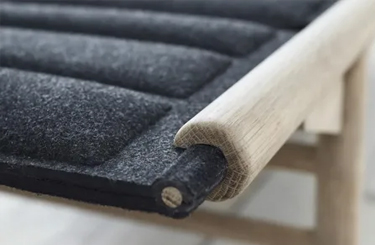types of bottom door seals
Understanding Different Types of Bottom Door Seals A Comprehensive Guide
Bottom door seals are an essential component of any door system, providing crucial protection against various environmental factors. These seals not only enhance energy efficiency but also improve comfort by blocking drafts, dust, and noise. In this article, we’ll explore the different types of bottom door seals available, their materials, and their specific applications.
1. Rubber Seals
Rubber seals are among the most popular types of bottom door seals. They are flexible, durable, and weather-resistant. Made from various types of rubber, including EPDM and neoprene, these seals can withstand extreme temperatures, making them ideal for both exterior and interior doors. Rubber seals are generally easy to install and can effectively block air and moisture, thus helping to maintain indoor climate control.
2. Vinyl Seals
Vinyl seals provide a lightweight and economical solution for sealing gaps at the bottom of doors. They are often used in commercial settings due to their durability and resistance to wear and tear. Vinyl seals are available in various shapes and sizes, including T-shaped and L-shaped designs, which can fit different door types. Though not as resilient under extreme temperatures as rubber, they are effective for moderately controlled indoor environments.
3. Brush Seals
Brush seals consist of stiff bristles attached to a backing material that is fitted to the door's bottom edge. These seals are particularly effective for reducing air infiltration and preventing dust and debris from entering a space. They are often used in industrial and commercial settings, such as warehouses and workshops, where heavy doors frequently open and close. Brush seals allow for a tight fit without sacrificing ease of operation, making them versatile for various applications.
4. Automotive Seals
types of bottom door seals

While primarily designed for vehicles, automotive seals can also be adapted for use in residential and commercial applications. These seals are usually made of rubber or foam and are designed to provide a snug fit to prevent water intrusion. Their unique design allows them to compress easily, making them particularly effective for doors that experience high traffic or frequent use.
5. Compression Seals
Compression seals work by creating a tight barrier when the door is closed. These seals are typically made from foam or rubber and are designed to compress, filling any gaps between the door and the threshold upon closure. Compression seals are perfect for environments that require a strong seal to keep out air, noise, and moisture. They are commonly used on exterior doors, garage doors, and in industrial applications.
6. Threshold Seals
Threshold seals are installed on the floor at the base of the door, creating a barrier that meets the bottom edge of the door. These seals are effective for preventing drafts and water from entering, making them ideal for external doors. Made from materials like rubber, metal, or vinyl, threshold seals can be particularly useful in regions with heavy rainfall or snow.
Choosing the Right Seal
When selecting a bottom door seal, consider factors such as the type of door, the environment it will be exposed to, and the specific sealing requirements. For exterior doors, rubber or threshold seals are often preferred for their durability and effectiveness in weatherproofing. For interior doors, vinyl or brush seals may be sufficient to minimize dust and noise.
In conclusion, bottom door seals are a vital part of maintaining comfort and energy efficiency in any space. By understanding the different types of seals available and their respective advantages, you can make an informed choice that best suits your needs. Investing in the right seal can lead to long-term benefits, providing a barrier against unwanted drafts, noise, and moisture, and ultimately enhancing your living or working environment.
-
Under Door Draught Stopper: Essential ProtectionNewsJul.31,2025
-
Garage Door Seal and Weatherstrips for ProtectionNewsJul.31,2025
-
Edge Banding Tape for Perfect EdgesNewsJul.31,2025
-
Table Corner Guards and Wall Corner ProtectorsNewsJul.31,2025
-
Stair Nose Edging Trim and Tile Stair SolutionsNewsJul.31,2025
-
Truck Bed Rubber Mats for Pickup BedsNewsJul.31,2025
-
Window Weather Stripping for Noise ReductionNewsJul.29,2025